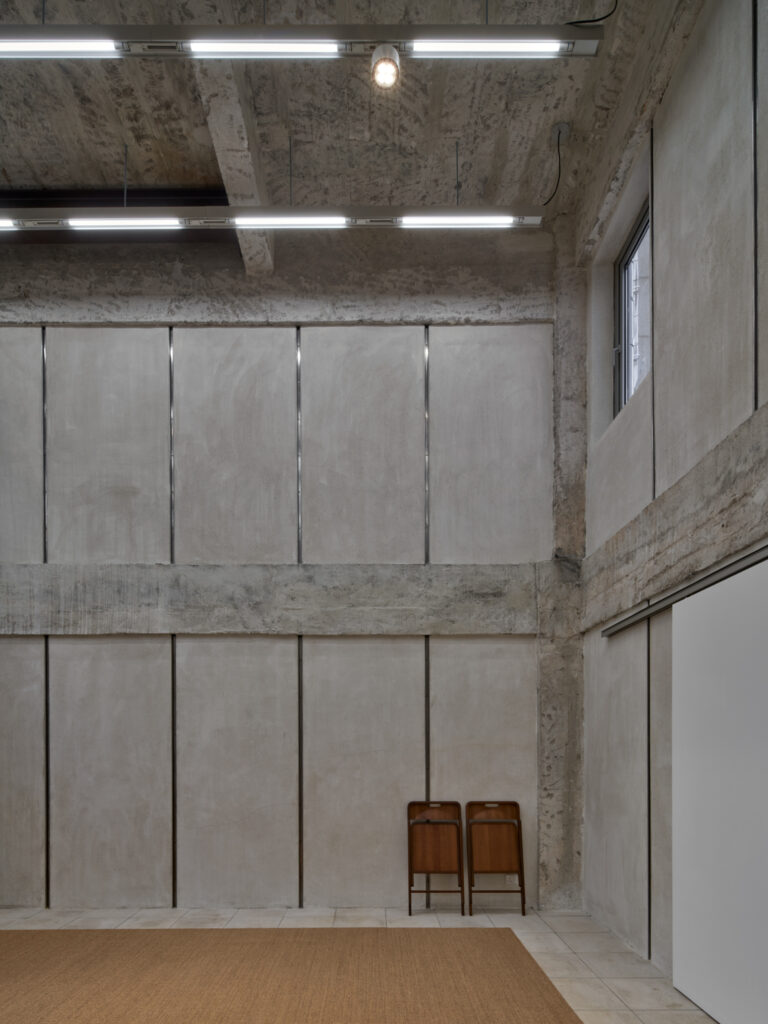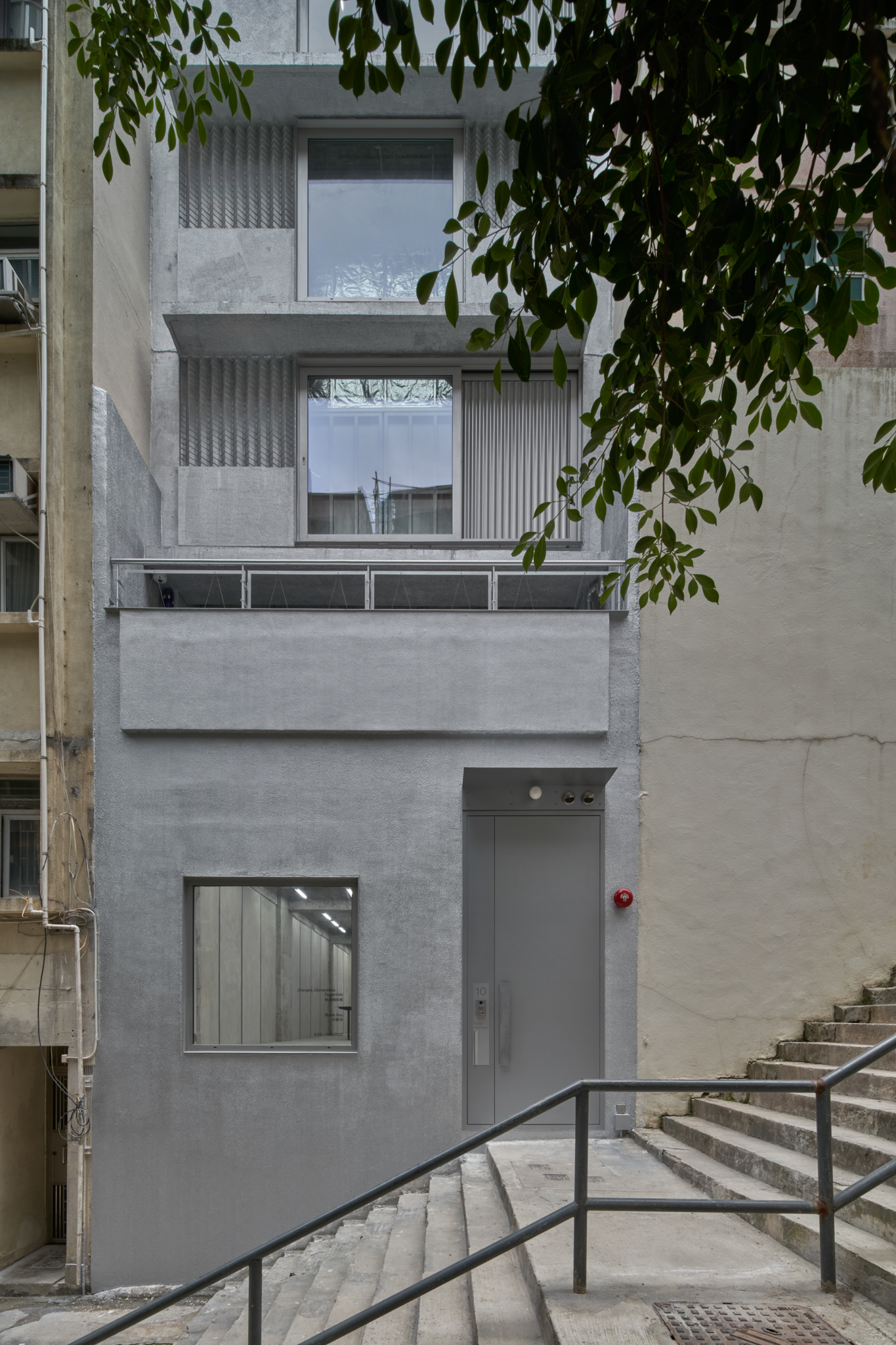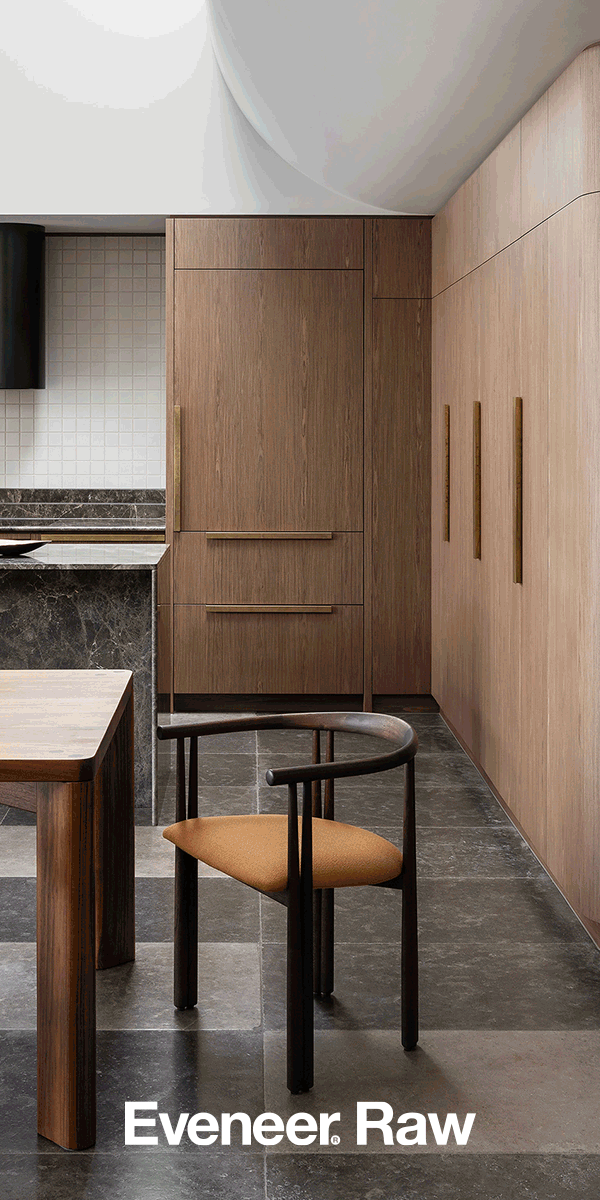Kate Goodwin catches up with architectural practitioner, advocate and Palawa woman Sarah Lynn Rees – recipient of the Australian Institute of...
Shelves, backgrounds, architecture in action
BEAU Architects
Essay
Eric Yuen Pak-ho
Photography
Leon Xu Liang

Shelves are marked out in the space and then fixed to the wall screw by screw. Threaded rods, cut to equal lengths beforehand, are turned into sockets. A nut is fastened until approximately 15mm away from the mount socket; the roller bracket is slid in after, followed by another nut that secures the bracket in place. After placing the shelf above, the level is slightly uneven. No panic; the nut is loosened at the higher end, so the roller bracket and its holes, which are conveniently larger than the rod, can loosen and drop down. Check it again. The shelf is level. The imprecision in construction is accounted for by precision in detailing.
—
Located in the main dining room and pantry space at the Kiang Malingue Gallery, the shelves are constructed from an assemblage of fixtures readily found in Hong Kong hardware stores. It is part of BEAU Architects’ larger project to build an understanding of the local supply chains, available proprietary products and the potential for these to be assembled and appropriated.
Their method was originally born out of financial necessity, reflecting the conditions they operate in; most of their projects lie in exhibition design and art spaces in a volatile commercial leasing environment. All their projects are assumed to have a finite lifespan and quick build times. So, customising everything is not an option.

Through years of practise, BEAU have evolved to go against the puritanical minimalist urge to hide everything. For them, architecture is expressed as an act of assemblage: constructing loose ends that are open to change and ready to be dismantled. When obsolete, the shelves can be deconstructed into the parts they once were in, hoping to be reassembled in another place.
BEAU often describes their work as a combination of constants and variables. By establishing families of objects, BEAU employs the same construction details throughout a project and repurposes them for a variety of different situations and uses. [i] This allows for the addition and subtraction of parts in different circumstances, allowing their spaces to be “hackable”. [ii]
Their dynamic detailing departs from the idea of architecture as a monument or immovable product and moves towards an attitude that embraces architecture as a continuous act.[iii] As inhabitants settle in and learn about the building, its architecture becomes more and more responsive and transient.
To condense years of practise into one detail will do BEAU Architect’s work injustice. However, the shelf can be seen as a distillation of an approach to architecture—background, loose-end architecture ready to be appropriated and changed.
[i] As opposed to objects that look similar but require different detailing. For instance, the common architectural trap is to make the same shapes with different materials (e.g., timber vs. metal).
[ii] References can be traced to furniture systems, such as Dieter Rams’ 606 Universal Shelving System, also found in the gallery.
[iii] Not to be confused with formally “dynamic architecture”, which often requires unique details at every turn, such as façades with a continuous fluid form constructed from hundreds, if not thousands, of individually unique cladding panels with limited interchangeability.

Courtesy XU Liang Leon

